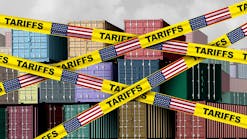Biden’s Executive Order Calls To Accelerate Deployment Of Clean Energy, Transmission Projects
President Joe Biden on Jan. 27 issued the “Executive Order on Tackling the Climate Crisis at Home and Abroad,” noting that there are opportunities to “put the United States on a path to achieve net-zero emissions, economy-wide, by no later than 2050.”
Biden said in the executive order, “The federal government must drive assessment, disclosure, and mitigation of climate pollution and climate-related risks in every sector of our economy, marshaling the creativity, courage, and capital necessary to make our nation resilient in the face of this threat.”
The executive order established a National Climate Task Force, which is to consist of such members as the secretaries of the Interior, of Agriculture, of Commerce, and of Energy. The executive order added that the task force is to facilitate planning and implementation of key federal actions to reduce climate pollution; increase resilience to the impacts of climate change; protect public health; conserve the country’s lands, waters, oceans, and biodiversity; deliver environmental justice; as well as spur well-paying union jobs and economic growth. As necessary and appropriate, the task force will engage on those matters with, for instance, state, local, Tribal, and territorial governments, the executive order noted.
The executive order further noted that the Secretary of the Interior is to review siting and permitting processes on public lands and in offshore waters to identify to the task force steps that can be taken, consistent with applicable law, to increase renewable energy production on those lands and in those waters, with the goal of doubling offshore wind by 2030, while ensuring protection for the country’s lands, waters, and biodiversity.
In addition, the Chair of the Council on Environmental Quality, the Administrator of General Services, and the Director of the Office of Management and Budget, in coordination with others, are to assist the National Climate Advisor, through the task force, in developing a comprehensive plan that is to aim to use, as appropriate and consistent with applicable law, all available procurement authorities to achieve or facilitate a carbon pollution-free electricity sector by 2035, as well as clean and zero-emission vehicles for federal, state, local, and Tribal government fleets.
The executive order also stated that to the extent consistent with applicable law, the Secretary of the Interior is to pause new oil and natural gas leases on public lands or in offshore waters pending completion of a comprehensive review and reconsideration of federal oil and gas permitting and leasing practices in light of the secretary’s broad stewardship responsibilities over the public lands and in offshore waters.
Furthermore, the executive order said that the heads of agencies are to identify for the Director of the Office of Management and Budget and the National Climate Advisor any fossil fuel subsidies provided by their respective agencies, and then take steps to ensure that, to the extent consistent with applicable law, federal funding is not directly subsidizing fossil fuels. The Director of the Office of Management and Budget is to seek, in coordination with the heads of agencies and the National Climate Advisor, to eliminate fossil fuel subsidies from the budget request for FY22 and thereafter, the executive order said.
Biden also noted that it is his administration’s policy “to improve air and water quality and to create well-paying union jobs and more opportunities for women and people of color in hard-hit communities, including rural communities, while reducing methane emissions, oil and brine leaks, and other environmental harms from tens of thousands of former mining and well sites.”
The executive order established the Interagency Working Group on Coal and Power Plant Communities and Economic Revitalization, which is to, for instance, coordinate the identification and delivery of federal resources to revitalize the economies of coal, oil and gas, and power plant communities, as well as assess opportunities to ensure benefits and protections for coal and power plant workers. The group is to submit a report to Biden within 60 days of the executive order, describing all mechanisms, consistent with applicable law, to prioritize grantmaking, federal loan programs, technical assistance, financing, procurement, or other existing programs to support and revitalize the economies of coal and power plant communities, the executive order added.
Among other things, Biden noted that the country “needs millions of construction, manufacturing, engineering, and skilled-trades workers to build a new American infrastructure and clean energy economy.”
The executive order said that the Chair of the Council on Environmental Quality and the Director of the Office of Management and Budget are to take steps, consistent with applicable law, to ensure that federal infrastructure investment reduces climate pollution, as well as to require the federal permitting decisions consider the effects of greenhouse gas emissions and climate change.
In addition, they are to review — and report to the National Climate Advisor on — siting and permitting processes, including those in progress under the auspices of the Federal Permitting Improvement Steering Council, as well as identify steps that can be taken, consistent with applicable law, to accelerate the deployment of clean energy and transmission projects in an environmentally stable manner, the executive order said.
Agency heads conducting infrastructure reviews are to, as appropriate, consult from an early stage with state, local, and Tribal officials involved in permitting or authorizing proposed infrastructure projects to develop efficient timelines for decision-making that are appropriate given the complexities of proposed projects, the executive order said.


